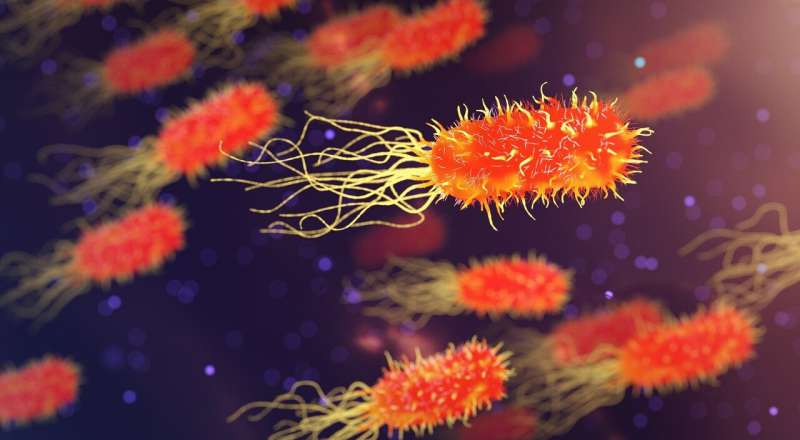Drug resistance molecule can spread though bacterial 'communities'

DNA molecules called plasmids—some of which protect bacteria from antibiotics—can spread rapidly through bacterial "communities" that are treated with antibiotics, new research shows.
Plasmids are found within bacterial cells, sometimes slowing bacterial reproduction—but they can carry genes that stop antibiotics from working (called antimicrobial resistance).
The new laboratory study, by the University of Exeter, found that a plasmid that benefits one or more species spreads not just through those species but to others in the community.
Bacterial communities exist both in the environment and in the "microbiome" of individual organisms including humans.
"Very often, antimicrobial resistance isn't tied to the bacteria itself—it's encoded in plasmids they carry, and can pass on," said lead author Arthur Newbury, of the Environment and Sustainability Institute on Exeter's Penryn Campus in Cornwall.
"Plasmids can jump between bacteria and, although most don't cause antimicrobial resistance, those that do make the new host instantly resistant."
"These plasmids become beneficial when antibiotics are around, which is one reason why resistance can appear and spread very rapidly in hospitals."
With one or more bacterial species benefitting from harboring a plasmid, the plasmid reaches a "higher density" in the population—making it more likely to spread to other species.
In turn, this makes it more likely that a plasmid will be passed to a pathogenic (illness-causing) species in the community—even if that species has not yet been exposed to an antibiotic.
"Our results suggest that exposure of microbial communities—including human microbiomes—to antibiotics could facilitate the spread of other plasmid-encoded genes, including antimicrobial resistance genes," said Dr. Dirk Sanders, also of the ESI.
The study used a network approach—a highly effective way to examine complex situations ranging from bacterial communities to pandemics.
The team are already expanding this research, testing with more plasmids and more complex bacterial communities (including tests on how plasmids might spread in waste water).
"There is massive potential for antimicrobial resistance caused by plasmids to spread in environmental settings," Dr. Sanders explained.
The paper was published in the journal Proceedings of the National Academy of Sciences.
More information: Arthur Newbury et al, Fitness effects of plasmids shape the structure of bacteria–plasmid interaction networks, Proceedings of the National Academy of Sciences (2022).
Journal information: Proceedings of the National Academy of Sciences
Provided by University of Exeter















